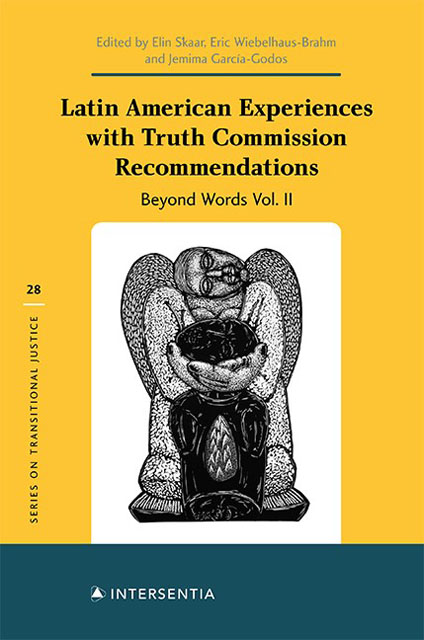Peru’s Truth and Reconciliation Commission: Recommending a Piecemeal Approach to Transitional Justice
Published online by Cambridge University Press: 19 November 2022
Summary
INTRODUCTION
In 2000, a transition to democracy started in Peru after Alberto Fujimori's regime collapsed under serious accusations of corruption. Fujimori had ruled the country since he was democratically elected in 1990. His regime turned authoritarian in April 1992, when he staged a coup d’état, closing down the Parliament and the Judicial Branch. In that same year, the founder and leader of the Shining PaTh(Sendero Luminoso) was captured by the police, enabling Fujimori to neutralize the illegal armed organization which had launched a communist revolutionary war with terrorist methods in 1980. The success in defeating the Shining PaThand a strong Peruvian economy driven by economic liberalization allowed him to enjoy strong public support despite the widespread human rights abuses and authoritarian ways that characterized his administration. When the transition began at the turn of the millennium and democratic forces reasserted themselves, the government decided to establish an independent investigative body to address the demands for truth and justice that victims and human rights organizations had been making, without success, since the early 1980s (Root 2012, 52 – 53).
The creation of an investigative body to document the abuses carried out during the period of violence was a key element of the Peruvian transitional context. This decision was made possible, in part, due to the fact that the Peruvian transition was not a negotiated process. As Eduardo Gonzalez (2006, 74) points out, “Peru's transition would not be the result of a negotiated arrangement, like the Spanish or the Chilean transitions that were the paradigm for many Peruvian democratic politicians”. The Fujimori regime had crumbled under a stream of revelations of corruption; the military lost legitimacy due to its subordination to Fujimori's collaborator, Vladimiro Montesinos. At the same time, the Shining Path no longer presented an armed challenge to the State. As a result, the Peruvian transition did not need peace negotiations and the inevitable compromises implied in such political processes (Gonzalez 2006).
This situation permitted the government to make some important decisions. One was to shed light on past human rights abuses committed not only by the Shining Path but also by the military and the police. Second, prior to the decision to create the truth commission, was the return in 2001 to the Inter-American system of human rights (Root 2012, 69). According to Rebecca Root these were “(t)he first crucial steps toward a comprehensive transitional justice process” (Root 2012, 69).
- Type
- Chapter
- Information
- Latin American Experiences with Truth Commission Recommendations: Beyond Words Vol. II , pp. 277 - 314Publisher: IntersentiaPrint publication year: 2022



